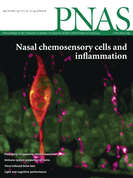 Evolution
Evolution
 Intelligent Design
Intelligent Design
Defining "Functional": The Latest from ENCODE
The latest from ENCODE is here, "Defining functional DNA elements in the human genome," in PNAS. They are sticking to their guns.
From the Abstract:
With the completion of the human genome sequence, attention turned to identifying and annotating its functional DNA elements. As a complement to genetic and comparative genomics approaches, the Encyclopedia of DNA Elements Project was launched to contribute maps of RNA transcripts, transcriptional regulator binding sites, and chromatin states in many cell types. The resulting genome-wide data reveal sites of biochemical activity with high positional resolution and cell type specificity that facilitate studies of gene regulation and interpretation of noncoding variants associated with human disease. However, the biochemically active regions cover a much larger fraction of the genome than do evolutionarily conserved regions, raising the question of whether nonconserved but biochemically active regions are truly functional.
 Some observations.
Some observations.
First, the paper is a remarkably restrained and balanced response to some of the rather intemperate criticisms of ENCODE from hard-core Darwinists who insist that (a) ONLY an evolutionary approach yields valid information about functionality, (b) evolutionary theory necessarily implies that most of our DNA is junk, and (c) junk DNA provides evidence that Darwinian evolution is a fact. In other words this paper is a model of rational and civil scientific discourse, in contrast to what we have come to expect from some hard-core Darwinists.
Second, it calmly assesses the pros and cons of three approaches: genetic, evolutionary, and biochemical.
The genetic approach judges function on the basis of perturbing (e.g., mutating) DNA. If perturbation affects the phenotype (the observable anatomy and physiology of the organism), then that piece of DNA is deemed functional. So far so good, but the genetic approach often misses effects that occur only in rare cells or specific environmental contexts, and widespread redundancy means that double or triple perturbations may be needed to detect functionality. So estimates of the percentage of functional DNA based on this approach are always lower than the actual percentage.
The evolutionary approach judges functionality based on sequence conservation among species: Conserved sequences are assumed to imply selective constraint, which in turns implies functionality. One problem with this approach is that sequence comparisons depend heavily on the method used to align sequences in different species; since alignment methods differ, so do measures of conservation. A more serious problem is that non-conservation does not imply non-functionality (as many evolutionary biologists acknowledge). For example, an "orphan gene" may be fully functional (indeed, essential) even though it occurs in only one species — i.e., even though it is completely non-conserved. So the evolutionary approach invariably (and often drastically) underestimates the percentage of functional DNA in an organism.
The biochemical approach, which is favored by the ENCODE project and the authors of this paper, judges functionality based on biochemical evidence, such as detection of an RNA that is transcribed from a region of DNA that does not code for protein. This approach is much more sensitive than the first two to different cell types and conditions, and to different developmental stages. It also yields a much higher estimate of functionality than the first two approaches. The problem is that the mere presence of an RNA does not necessarily mean that the RNA is functional. Additional tests must be undertaken to determine that, and such tests are often not easy to perform.
The authors conclude that all three approaches must be taken into account, though a simple intersection of the three (which would include only DNA sequences that meet the test of functionality for all three approaches) would be far too restrictive. Unfortunately, the authors do not specify exactly how the three approaches could be integrated to yield a single reliable estimate of the percentage of functional DNA.
So the debate continues.
